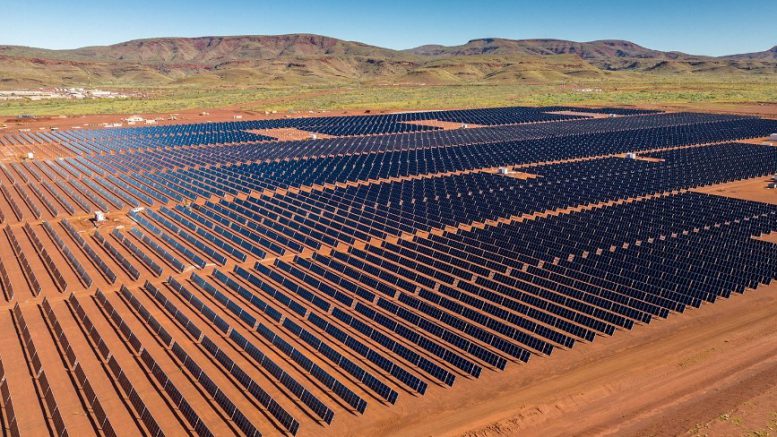Solar energy will dominate the mining industry by 2040, or it will take an additional 20 years, according to two new executive surveys from different sides of the globe.
Mining leaders from companies such as Rio Tinto (NYSE: RIO; LSE: RIO; ASX: RIO), BHP (NYSE: BHP; LSE: BHP; ASX: BHP) and South32 (LSE: S32; ASX: S32) predict solar will be their main energy source in 15 years, the Australian industry group State of Play says.
In San Francisco, management consultant Bain & Co. says 62% of industry leaders in oil and gas, utilities, chemicals, agribusiness as well as mining told it the world will take at least until 2060 to reach net-zero carbon emissions. That’s up from 54% last year as companies encounter more customers who don’t want to pay for the transition, Bain said.
“Companies are focusing on projects with a viable return-on-investment path,” Joe Scalise, head of Bain’s energy and natural resource practice, said in a release. “Clearly, the longer the executives are at the front lines of the energy transition, the more sober they are getting about the transition’s practical realities.”
Down Under, mining leaders predict oil and diesel will only contribute around 20% of the industry’s future energy, with 79% indicating solar will be the main power source over the next decade and a half.
“Society is expecting the mining industry to step up, and as a consequence we are seeing innovations in processing, new energy sources and technologies,” Graeme Stanway, chairman of State of Play, said in a release. “Technology like long duration energy storage has come a long way in the last few years, as has the use of artificial intelligence.”
Industry leaders
State of play has reported on the industry every two years since 2012. It surveyed 720 miners, suppliers, government, investment and researchers involved in the industry across 50 countries, including 18 interviews with industry leaders. Bain polled more than 600 leaders over a wider scope of industries in its fourth annual look at the energy transition.
The negative image of the mining industry in society, which State of Play says almost all executives acknowledge, is helping drive the push for projects to use renewable energy, as is a government push to capitalize on green critical minerals. Companies such as Bellevue Gold (ASX: BGL) are developing assets with more than 80% renewable energy use, while others such as Gold Fields (NYSE: GFI) have trialled electric vehicles, the group says.
State of Play also found 56% of all respondents said geopolitical alliances will have the biggest impact on the industry’s global supply chains and 81% of respondents believe battery minerals offer the most attractive investment returns over the next 15 years.
Nearly 70% of CEOs suggested their timeframe for innovation focus was less than three years, while two-thirds of respondents said there would be a carbon-based price differential for their commodities within five years.
Acceptable returns
Bain identified other themes besides fewer executives saying net-zero could be done by mid-century: companies are maintaining or increasing investments in their transition-oriented businesses, but they must generate acceptable returns and artificial intelligence will be key.
A 500-basis-point increase in the cost of capital can increase the total annual revenue required to finance a project by as much as 50%, Bain said.
“The direct impact of higher interest rates on the cost of transition projects is one of the most important stories of 2023 and is likely shaping executives’ perspective on the challenges associated with customer willingness to pay,” Grant Dougans, with Bain’s energy and natural resources unit in Washington, D.C., said in the release. “Higher rates put real upward pressure on the effective cost of low carbon projects.”
Also, Bain said North America is the most attractive region for investment followed by Europe, Australia and New Zealand.
The Inflation Reduction Act in the United States is a major factor in North America’s investment attractiveness, even as many said its rules were difficult to follow. Relatively low-cost natural gas also influenced the result, Bain said.
However, less than a quarter surveyed said the tax policy will remain stable over the next five to 10 years.


Be the first to comment on "Net-zero goal within reach, or is it, new surveys argue"